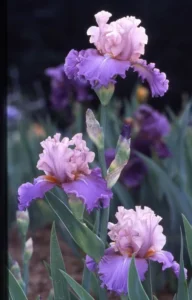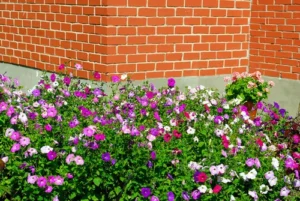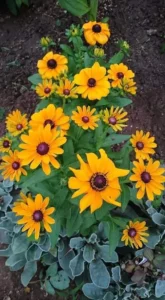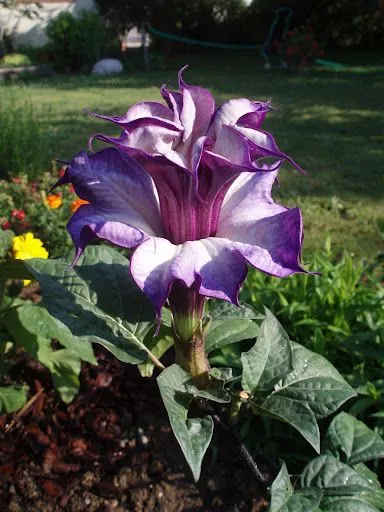Aster Flower Gardening 2024
Aster flowers, with their vibrant blooms and diverse forms, have long been cherished in gardens and landscapes around the world. These exquisite flowers, which come in a variety of colors and shapes, offer a dazzling display of beauty from late summer through fall, brightening gardens as the days grow shorter. The journey of cultivating aster flowers in your garden is not only about planting and care but also about connecting with a rich historical legacy and embracing the joy of gardening

landscapes of Europe
The aster’s story begins in the wild landscapes of Europe, Asia, and North America. Ancient Greek botanists first described the aster, deriving its name from the Greek word for “star,” reflecting the star-shaped arrangement of the flower’s petals. In ancient Greece, asters were symbolic of wisdom and love, and they were often used in traditional medicine to treat various ailments. The Greeks believed that the aster’s star-like flowers were a gift from the gods, a symbol of the stars that guided their paths and inspired their myths.
As time moved forward, the aster found its way into European gardens during the Renaissance period. Gardeners of the era were captivated by the aster’s radiant blooms and its ability to provide color in the late summer and early fall, a time when many other flowers had faded. The aster became a staple in ornamental gardens, prized for its beauty and its role in extending the garden’s blooming season. This period marked the beginning of a deep appreciation for asters, which would only grow as horticultural practices evolved over the centuries.
The 19th century saw a surge in aster cultivation as plant enthusiasts began to explore and document different species and varieties. During this time, plant explorers traveled to various continents, bringing back new plant species, including asters, to Europe and America. These explorers expanded the aster’s reach, introducing gardeners to new varieties with a range of colors, sizes, and forms. The Victorian era’s fascination with botanical collections and garden design further cemented the aster’s place in garden aesthetics, with its diverse forms and vibrant colors becoming symbols of beauty and elegance in gardens.
Victorian era’s fascination
In modern times, asters have continued to be popular among gardeners for their striking appearance and their ability to thrive in a variety of conditions. They are available in numerous species and cultivars, each offering unique features that cater to different gardening preferences. From the classic New England aster to the delicate alpine aster, the range of options allows gardeners to select the perfect variety for their specific needs and garden designs.
Growing asters is a gratifying experience that begins with selecting the right type for your garden. Asters are divided into two main categories: perennial asters and annual asters. Perennial asters, such as the New England aster and the Michaelmas daisy, are long-lived plants that return each year, providing a consistent source of color and beauty. Annual asters, like the China aster, complete their life cycle in a single year but offer a burst of color throughout their growing season.
When choosing an aster variety, consider factors such as climate, soil conditions, and the desired aesthetic effect. Perennial asters are ideal for gardeners seeking plants that will provide consistent blooms year after year. These varieties are well-suited for garden beds, borders, and naturalized areas. Annual asters, with their vibrant colors and varied forms, are perfect for creating temporary displays of beauty or for adding quick color to flower pots and containers.
Once you have selected your aster variety, the next step is to plant it. Asters thrive in well-drained soil with a neutral to slightly alkaline pH. They prefer a sunny location but can also tolerate partial shade. Prepare the planting site by loosening the soil and incorporating organic matter such as compost or aged manure. This improves soil fertility and drainage, providing a healthy environment for the asters to grow.

Victorian era’s fascination
Victorian era’s fascination involves several key steps. Begin by digging a hole that is twice as wide as the root ball of the plant and slightly deeper than the root ball. Gently place the aster into the hole, ensuring that the top of the root ball is level with the surrounding soil. Space the plants about 12 to 18 inches apart to allow for their mature size and to promote good air circulation. After planting, water the asters thoroughly to help them settle into their new home.
Watering asters is an important aspect of their care. While asters are relatively drought-tolerant once established, they do require regular watering, especially during dry periods. Water the plants at the base, avoiding overhead watering to prevent fungal diseases. A deep, infrequent watering schedule is ideal, allowing the soil to dry out between waterings. Mulching around the base of the plants can help retain soil moisture and suppress weeds, but be careful not to let the mulch touch the stems, as this can lead to rot.
Fertilizing asters is another important task for successful growth. Asters benefit from a balanced, all-purpose fertilizer applied in the spring, just as new growth begins. Choose a fertilizer with an equal ratio of nitrogen, phosphorus, and potassium, or opt for a formulation designed for flowering plants. Follow the instructions on the fertilizer package for the correct application rate, as over-fertilizing can lead to excessive foliage growth at the expense of blooms.
Pruning asters is a useful technique for maintaining plant health and promoting a more compact, bushy growth habit. The best time to prune asters is in the spring, just as new growth starts to emerge. Remove any dead or damaged stems, and pinch back the tips of the plants to encourage branching and a fuller appearance. Deadheading spent flowers throughout the blooming season can also extend the flowering period and prevent the plants from setting seed.
Asters are generally hardy plants, but they can occasionally face challenges from pests and diseases. Common pests include aphids, spider mites, and caterpillars. Aphids can be controlled with insecticidal soap or by introducing beneficial insects like ladybugs. Spider mites thrive in dry conditions, so increasing humidity around the plants can help manage these pests. Caterpillars, which can cause damage to the leaves and flowers, can be removed by hand or treated with appropriate insecticides.
Diseases That Affect
Diseases that affect asters are typically related to environmental conditions. Fungal diseases such as powdery mildew and rust can occur if the plants are kept too wet or if there is poor air circulation. To prevent these issues, ensure that the plants are spaced properly, avoid overhead watering, and remove any infected plant material from the garden. Keeping the garden clean and practicing good hygiene can also help reduce the risk of disease.
One of the most rewarding aspects of growing asters is the opportunity to enjoy their beauty and incorporate them into your garden design. Asters are versatile plants that can be used in a variety of ways to enhance your outdoor space. They make excellent additions to garden beds, where their vibrant colors and tall, upright stems can provide a striking contrast to other plants. Asters can also be used in mixed borders, where they add color and texture to the garden throughout the late summer and fall.
In addition to their use in garden design, asters also make beautiful cut flowers. The blooms can be harvested for floral arrangements, where they add a burst of color and elegance to bouquets and centerpieces. Asters are also a popular choice for dried flower arrangements, as their blooms retain their shape and color when dried. Creating arrangements with asters allows you to enjoy the beauty of your garden indoors and share the flowers with friends and family.
Beyond their visual appeal, asters also have a role in supporting local wildlife. The flowers attract pollinators such as bees, butterflies, and moths, which are essential for maintaining a healthy garden ecosystem. By planting asters, you are providing valuable resources for these beneficial insects, helping to sustain their populations and promote biodiversity in your garden.
The future of aster gardening is an exciting prospect, with ongoing developments in plant breeding and horticultural practices. New aster varieties are continually being introduced, offering gardeners a range of options to explore. Advances in breeding techniques are producing asters with improved disease resistance, longer blooming periods, and a wider range of colors and forms. The growing interest in sustainable gardening practices also presents opportunities to experiment with organic methods and to explore eco-friendly garden designs.
As you cultivate your aster garden, you will find that the experience is both enriching and fulfilling. The process of growing and caring for asters offers a chance to connect with nature, to learn about the history and traditions of gardening, and to create a beautiful outdoor space that reflects your personal style and values. The joy of watching your asters grow and bloom is a testament to the rewards of gardening and the beauty of these remarkable flowers.
In summary, aster flower gardening is a journey that encompasses the art and science of horticulture. The aster’s rich history, stunning appearance, and versatility make it a cherished choice for gardens around the world. From selecting the right variety and planting it properly to caring for the plants and enjoying their beauty, the process of growing asters offers a wealth of opportunities for creativity and satisfaction.
Whether you are an experienced gardener or a beginner, asters offer a range of possibilities for exploration and enjoyment. Their beauty, resilience, and historical significance make them a valuable addition to any garden. By embracing the challenges and rewards of aster gardening, you are participating in a tradition that spans centuries and celebrates the wonders of the natural world.
As you nurture your asters and witness their growth, you will discover the joy that comes from creating a garden space that is both beautiful and meaningful. The time you invest in your aster garden will be rewarded with a vibrant display of flowers and a garden that brings color and joy to your outdoor space. May your aster garden thrive and continue to inspire you as you explore the many facets of gardening and the beauty of these extraordinary flowers.
Through your aster garden, you are not only creating a stunning visual display but also connecting with a long tradition of horticultural excellence and artistic expression. The legacy of the aster flower, from its ancient roots to its modern-day uses, offers a rich tapestry of history and beauty that you can experience firsthand as you cultivate these remarkable plants in your own garden.
Embrace the journey of aster gardening with enthusiasm and curiosity, and let the beauty of these flowers guide you as you explore the joys of gardening and the wonders of the natural world.




